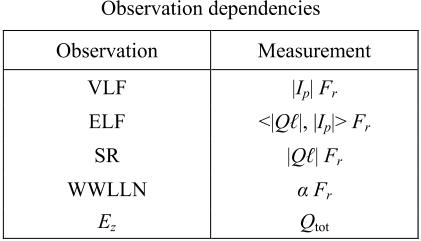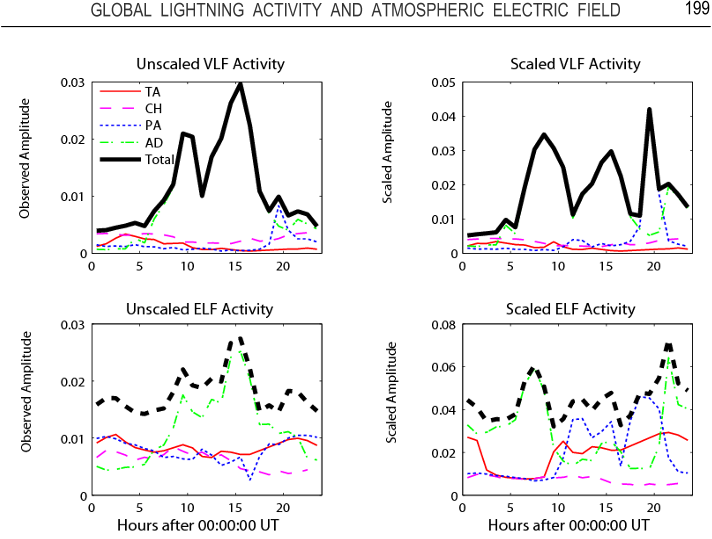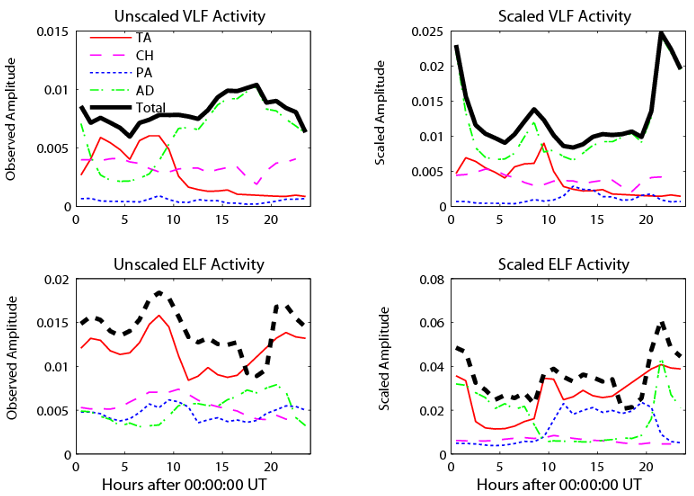




Did you find this useful? Give us your feedback




















75 citations
74 citations
17 citations
15 citations
...An ELF station with a single antenna enables measuring electrical lightning activity in the storm centers at a broad range of distances, starting at 0.15 Mm [Nieckarz et al., 2009b; Gołkowski et al., 2011]....
[...]
6 citations
176 citations
...M. GOŁKOWSKI et al. 184...
[...]
...The attenuation calculation is carried out separately for the ELF and VLF bands using published frequency dependent daytime and nighttime attenuation rates (Watt 1967, p. 338)....
[...]
163 citations
...Global lightning location networks in the VLF band have been constructed of which the World Wide Lightning Location Network (WWLLN) (Dowden et al. 2002, Lay et al. 2004, Rodger et al. 2006) is currently the most prominent example....
[...]
154 citations
...Kartalev et al. (2006) propose that the location of lightning in relation to the magnetic dip equator plays an important role while other workers have suggested that the answer lies in electric rain showers which are dominant in South America (Williams and Sátori 2004)....
[...]
...Kartalev, M.D., M.J. Rycroft, M. Füllekrug, V.O. Papitashvili, and V.I. Keremidarska (2006), A possible explanation for the dominant effect of South American thunderstorms on the Carnegie curve, J. Atmos....
[...]
...Rycroft et al. (2007) employed circuit simulation software to conclude that lightning discharges only contribute to ~1% of ionospheric potential changes and Williams and Sátori (2004) emphasize the importance of electrified shower clouds....
[...]
145 citations
...On global scales, the value of α for WWLLN does not exceed 5% (of cloud to ground lightning) (Rodger et al. 2005)....
[...]
...Sprites, on the other hand, are produced by the quasi-static electric fields (Pasko et al. 1997) which are associated with lightning charge moment....
[...]
...However, WWLLN is only able to locate major storms accurately, the detection efficiency for cloud to ground lightning events is less than a few percent (Rodger et al. 2005)....
[...]
...Acta Geophysica vol. 59, no. 1, Feb. 2011, pp. 183-204 DOI: 10.2478/s11600-010-0035-4 ________________________________________________ © 2010 Institute of Geophysics, Polish Academy of Sciences...
[...]
111 citations
...Rycroft et al. (2007) employed circuit simulation software to conclude that lightning discharges only contribute to ~1% of ionospheric potential changes and Williams and Sátori (2004) emphasize the importance of electrified shower clouds....
[...]
...Acta Geophysica vol. 59, no. 1, Feb. 2011, pp. 183-204 DOI: 10.2478/s11600-010-0035-4 ________________________________________________ © 2010 Institute of Geophysics, Polish Academy of Sciences...
[...]